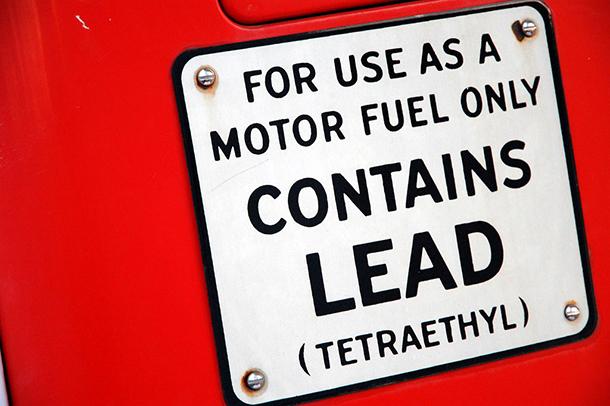EPA budget cuts threaten programs to reduce kids’ exposure to lead paint
Leaded gasoline was available to American consumers until 1996, although the EPA had already orchestrated the phase-out of the majority of leaded gasoline by the late 1980s.
Childhood lead poisoning remains a great threat to young children in the US. Nevertheless, the Trump administration proposes to cut funding for the Environmental Protection Agency’s lead programs and leave lead-reduction initiatives to the states.
According to the Department of Housing and Urban Development, more than a fifth of American homes contain enough lead-based paint to create a hazard to young children, whose developing brains can be harmed by even low levels of the toxic heavy metal.
In light of these public health risks, the EPA has special programs focused on reducing lead exposure in homes. These are among the many EPA programs on the chopping block in President Donald Trump’s proposed budget.
Overall, programs to reduce childhood lead exposure are a success story, says pediatrician Sean Palfrey, who has run lead-poisoning-prevention programs in Massachusetts since the 1970s.
“We’ve come a huge distance in terms of getting the rates of serious lead poisoning down,” Palfrey says. “Still, we have thousands of children who have lead levels of over 5 micrograms [of lead per deciliter of blood], which is the designated [Centers for Disease Control and Prevention] level of concern. So, we are constantly finding children who are poisoned at low levels.”
Nationally, the numbers are similar. Today, fewer than 3 percent of kids have excess blood lead. Back in the year 2000, nearly 9 percent of kids had elevated levels of the toxic heavy metal. Lead exposure is bad for “everyone at every age, but it’s particularly bad for kids whose brains are developing,” says Jessica Reyes, a professor of economics at Amherst College.
Reyes' work looks at the impacts of early childhood lead-exposure levels on issues like violent crime, child behavior problems, teen pregnancy, bullying and substance abuse. Even moderately elevated lead levels in young kids — 5 to 10 micrograms per deciliter — can result in broader societal ills, she says.
“At those levels, I find substantial effects on child behavior problems, teen pregnancy and crime, to the extent where if you change lead by, say, 10 percent, you will get later a change in crime of about 7 or 8 percent,” Reyes explains. “My estimates are that a third to a half of the decline in crime that occurred in the 1990s could be attributed to the removal of lead from gasoline in the 1970s.”
Rising concerns over lead poisoning in the early 1970s prompted national testing. Back then, everyone in America breathed in lead from car exhaust, and some young kids were getting a higher dose from ingesting dust and chips from degraded paint.
“Once we started testing, we found that everybody was lead poisoned in certain parts of the country, along the East Coast and [in] the Midwest,” Dr. Palfrey says.
The US EPA phased out leaded gasoline in the 1980s, but some 38 million homes still have remnants of lead paint. In 1922, the League of Nations, with its nearly 50 countries, banned the household use of lead paint, but the US never joined the League and Congress did not enact a similar ban until 1978.
In homes that still have lead paint, the risk of lead dust increases during home renovations.
“One of the things we talk to parents about is the danger of renovating your house with your child in it,” says Dr. Palfrey, “because, in the process of renovation, you stir up the lead in the paint, and it gets in the dust; you inhale it and the children inhale it, they get it on their hands and they put their hands in their mouth.”
Despite millions being at risk, government programs aren’t always effective. The Chicago Tribune recently reported that the Chicago Housing Authority failed to thoroughly inspect subsidized rental homes with young kids, but declared them safe anyway. Dozens of children were diagnosed with lead poisoning. Dr. Palfrey says we need to do better.
“Lead [acts] in terrible ways on children’s minds and bodies for decades,” he explains. “The only way we can prevent school failures caused by lead — or job failures, or crime, or educational deficiencies — is to prevent lead poisoning in the first place.”
But at the national level, there is uncertainty about funding for prevention. President Trump’s budget blueprint calls for a nearly $17 million cut in federal spending on the EPA’s lead-risk-reduction programs and for states to take responsibility. Jessica Reyes is skeptical that this will work. She believes the result will simply be less funding at all levels. Dr. Palfrey shares Reyes’ worries.
“The proposition that we cut EPA funding to states for lead poisoning prevention is very shortsighted and doesn’t acknowledge the fact that prevention is where we need to be at this point,” he says. “If we defund the ability to do that, then we are enabling the poisoning of most of our children.”
This article is based on a report that aired on PRI’s Living on Earth with Steve Curwood.
